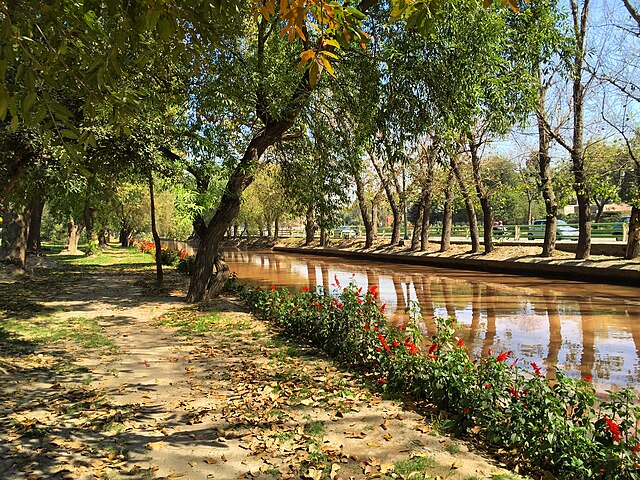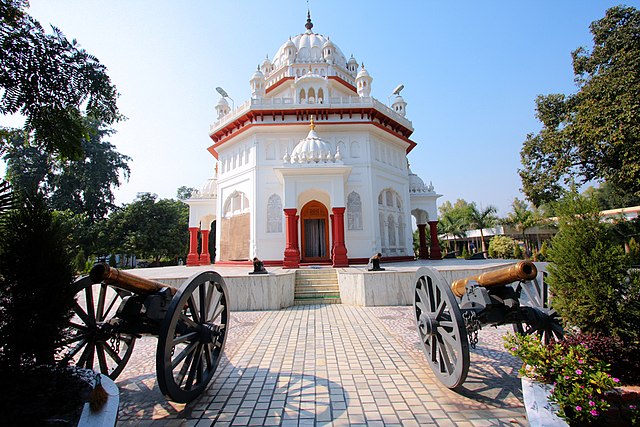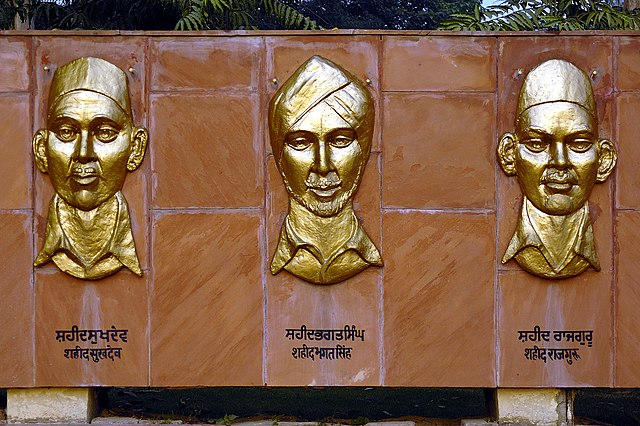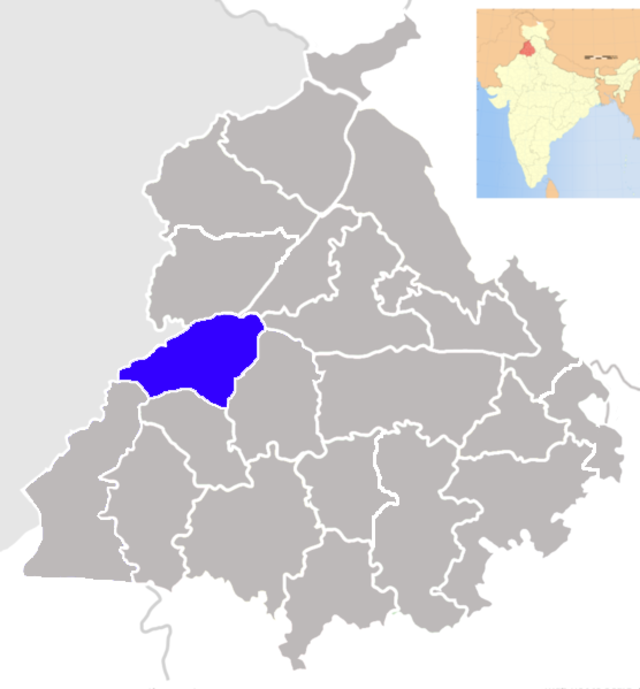Have you ever wondered what makes Ferozepur’s weather so unique? Nestled in the heart of Punjab, this border city experiences a fascinating blend of continental and subtropical climate patterns that shape the lives of its residents year-round. Whether you’re planning a visit, considering relocation, or simply curious about this historic city’s atmospheric conditions, understanding Ferozepur’s weather is essential.
Understanding Ferozepur’s Geographic Location and Climate Zone
Ferozepur sits strategically at coordinates 30.9°N latitude and 74.6°E longitude, positioning it in Punjab’s Malwa region near the Pakistan border. This geographic placement plays a crucial role in determining its weather patterns. The city experiences a semi-arid continental climate, characterized by extreme temperature variations between seasons.
The Sutlej River, flowing near the city, provides some moderating influence on local temperatures, though this effect is relatively minimal compared to the dominant continental air masses that sweep across the Indo-Gangetic plains. Ferozepur’s elevation of approximately 200 meters above sea level also contributes to its distinct weather characteristics.
The city’s proximity to the Thar Desert influences its dry conditions, while the Himalayas to the north affect winter weather patterns. This unique positioning creates a microclimate that’s both challenging and predictable, making it essential for residents and visitors to understand seasonal variations.
The Four Seasons of Ferozepur

Ferozepur’s weather follows a distinct four-season pattern, though the transitions between seasons can be quite abrupt. Each season brings its own characteristics, challenges, and beauty to this vibrant Punjab city.
Summer Season in Ferozepur (April to June)
Summer in Ferozepur is intense and unforgiving. The season typically begins in April when temperatures start climbing rapidly, reaching their peak in May and June. This period tests the endurance of both residents and visitors alike.
The scorching summer months transform Ferozepur into what locals often describe as a furnace. Streets shimmer with heat waves, and the afternoon sun becomes so intense that most outdoor activities come to a standstill between 11 AM and 4 PM.
During peak summer, you’ll notice how the city adapts to these extreme conditions. Markets open early in the morning, restaurants serve lighter meals, and people adjust their daily routines to avoid the harshest heat. The landscape takes on a golden-brown hue as vegetation struggles to survive the intense heat.
Temperature Patterns During Summer Months
Summer temperatures in Ferozepur regularly soar above 40°C (104°F), with maximum temperatures often reaching 45°C (113°F) or higher during heat waves. The minimum temperatures during summer nights rarely drop below 25°C (77°F), providing little respite from the heat.
May typically records the highest temperatures of the year, with the mercury often touching 47°C (117°F) during extreme heat events. These temperatures aren’t just numbers on a thermometer – they represent conditions that can be genuinely dangerous for human health if proper precautions aren’t taken.
The diurnal temperature variation during summer ranges from 15-20°C, meaning that while days are scorching, nights offer some relief. However, the concrete and asphalt in urban areas retain heat well into the night, creating an urban heat island effect that keeps temperatures elevated.
Monsoon Season in Ferozepur (July to September)
The arrival of monsoon in Ferozepur is like a breath of fresh air after the suffocating summer heat. Usually beginning in late June or early July, the monsoon season brings much-needed relief and transforms the landscape dramatically.
Monsoon clouds gather on the horizon, bringing hope and anticipation. The first showers are often celebrated by residents who have endured months of extreme heat. Streets come alive again, children play in the rain, and the parched earth drinks deeply.
The monsoon doesn’t just bring rain – it brings a complete transformation of life in Ferozepur. Temperatures drop significantly, humidity increases, and the air becomes fresh and clean. However, this season also brings its own challenges, including occasional flooding and transportation difficulties.
Rainfall Patterns and Precipitation Data
Ferozepur receives approximately 400-500mm of annual rainfall, with nearly 80% occurring during the monsoon months. July and August are typically the wettest months, receiving 100-150mm of rainfall each.
The rainfall pattern is often irregular, with periods of heavy downpours followed by dry spells. This variability can be challenging for agriculture and urban planning. Some years experience abundant rainfall, while others may face drought-like conditions.
Thunderstorms are common during the monsoon season, often accompanied by strong winds and occasional hail. These storms can be intense but brief, dumping large amounts of rain in short periods and sometimes causing localized flooding in low-lying areas.
Post-Monsoon Period (October to November)
The post-monsoon period in Ferozepur is arguably the most pleasant time of the year. As the monsoon retreats, the weather becomes ideal with comfortable temperatures, clear skies, and low humidity levels.
October brings relief from monsoon humidity while maintaining pleasant temperatures. The air becomes crisp and clear, offering excellent visibility and comfortable conditions for outdoor activities. This is when Ferozepur truly shines, with perfect weather for festivals, agriculture, and daily life.
November continues this pleasant trend, with cool mornings and warm afternoons creating perfect conditions. The harvest season coincides with this period, and you’ll see golden wheat fields surrounding the city, creating a picturesque landscape.
Winter Season in Ferozepur (December to March)
Winter in Ferozepur brings a dramatic change from the scorching summers. The season is characterized by cool to cold temperatures, occasional rainfall, and dense fog that can persist for days.
December marks the beginning of winter with a noticeable drop in temperatures. January is typically the coldest month, when residents bundle up in woolens and room heaters become essential. The winter season showcases a different side of Ferozepur – one that’s calm, serene, and sometimes mystical due to fog cover.
The winter months also bring occasional western disturbances, weather systems that originate in the Mediterranean region and bring brief periods of rain and sometimes even hail to northern India, including Ferozepur.
Cold Wave Conditions and Temperature Drops
Winter temperatures in Ferozepur can drop to as low as 2-4°C (36-39°F) during cold waves, typically occurring in January. The maximum temperatures during winter range from 15-20°C (59-68°F), creating pleasant daytime conditions.
Cold waves are meteorological events that can last several days, bringing bone-chilling temperatures that affect daily life significantly. During these periods, water pipes may freeze, vehicles require warming up, and heating becomes essential for comfort and health.
The diurnal temperature variation during winter is quite significant, often ranging from 15-18°C between day and night temperatures. This means that while afternoons can be pleasantly warm, nights and early mornings can be quite cold.
Monthly Weather Breakdown for Ferozepur

Understanding Ferozepur’s weather month by month helps in planning activities, agricultural operations, and daily life. Each month brings distinct characteristics that locals have learned to anticipate and adapt to over generations.
January starts the year with cold, crisp weather. Average temperatures range from 4°C to 18°C, with occasional fog that can reduce visibility significantly. February continues the winter pattern but with slightly warmer temperatures, ranging from 7°C to 22°C.
March signals the beginning of spring with temperatures rising to 12°C-28°C range. This month often experiences pleasant weather with occasional spring showers. April marks the transition to summer with temperatures climbing to 18°C-35°C, and the heat begins to intensify.
May and June are the peak summer months with temperatures soaring to 25°C-45°C range. July brings monsoon relief with temperatures dropping to 26°C-35°C accompanied by rainfall. August continues the monsoon pattern, while September marks the monsoon’s retreat with temperatures ranging from 23°C-34°C.
October offers the most pleasant weather with temperatures between 15°C-32°C, perfect for outdoor activities. November continues this trend with slightly cooler temperatures of 9°C-27°C, while December ushers in winter with temperatures dropping to 5°C-20°C range.
Humidity Levels Throughout the Year
Humidity in Ferozepur varies dramatically across seasons, creating different comfort levels and affecting how temperatures feel to the human body. During summer months, humidity levels are relatively low (30-40%), which makes the extreme heat somewhat more bearable than it would be in coastal areas.
Monsoon season brings the highest humidity levels, often reaching 80-90%. This high humidity, combined with moderate temperatures, can make the air feel quite heavy and sticky. Many residents use dehumidifiers or air conditioning during this period to maintain comfort indoors.
Winter months see moderate humidity levels (50-70%), which combined with cool temperatures, creates comfortable conditions. However, morning fog during winter months can push humidity levels higher temporarily, creating misty conditions that can last several hours.
Wind Patterns and Air Quality
Wind patterns in Ferozepur are influenced by both local and regional factors. During summer, hot dry winds called “loo” blow from the west and southwest, intensifying the heat and making outdoor conditions extremely uncomfortable.
Monsoon winds bring moisture from the Bay of Bengal and Arabian Sea, providing relief from summer heat. These winds are generally light to moderate but can become strong during thunderstorms. Post-monsoon period sees gentle winds that help maintain pleasant conditions.
Winter brings northwesterly winds that can be quite cold, especially during the night and early morning hours. These winds sometimes carry dust and pollutants from surrounding areas, affecting air quality. The winter months also see more stable air conditions, which can trap pollutants and reduce air quality in urban areas.
Extreme Weather Events in Ferozepur
Ferozepur, like many cities in northern India, experiences various extreme weather events that can significantly impact daily life, agriculture, and infrastructure. Understanding these events helps residents prepare and adapt accordingly.
The city has experienced record-breaking temperatures, with some summer days reaching close to 50°C (122°F). These extreme heat events can be life-threatening and require special precautions. Similarly, unusually cold winters have brought temperatures down to near-freezing levels, affecting crops and daily life.
Extreme rainfall events, though less common, can cause significant flooding in low-lying areas of the city. The drainage infrastructure sometimes struggles to cope with intense downpours, leading to waterlogging and transportation disruptions.
Heat Waves and Their Impact
Heat waves in Ferozepur are serious meteorological events that typically occur between April and June. These prolonged periods of excessively high temperatures can last anywhere from 3-10 days and pose significant health risks.
During heat waves, temperatures can remain above 45°C (113°F) for consecutive days, with little relief during night hours. The impact extends beyond human discomfort – electrical grids face increased demand, water supplies become stressed, and agricultural crops can suffer damage.
Local authorities often issue heat wave warnings and open cooling centers during extreme events. Residents are advised to stay indoors during peak hours, maintain hydration, and take other protective measures. The urban heat island effect can make city centers even hotter than surrounding rural areas.
Fog Conditions During Winter Months
Winter fog in Ferozepur is a significant weather phenomenon that can persist for days, dramatically reducing visibility and affecting transportation. This dense fog typically occurs between December and February, with January being the most affected month.
The fog forms due to specific atmospheric conditions – clear skies, light winds, and moisture in the air combine to create thick blankets of fog that can reduce visibility to less than 50 meters. This creates challenges for road transport, affects flight schedules at nearby airports, and impacts daily activities.
Local residents have adapted to these conditions over generations, adjusting travel plans and daily schedules during foggy periods. The fog usually lifts by late morning as temperatures rise, but during severe episodes, it can persist throughout the day.
Best Time to Visit Ferozepur Based on Weather

If you’re planning to visit Ferozepur, timing your trip according to weather conditions can make a significant difference in your experience. The city offers different charms during each season, but some periods are undoubtedly more comfortable than others.
The post-monsoon period (October-November) is widely considered the best time to visit Ferozepur. During these months, you’ll experience pleasant daytime temperatures, cool evenings, clear skies, and minimal rainfall. This period is perfect for sightseeing, outdoor activities, and exploring the city’s historical attractions.
Winter months (December-February) can also be excellent for visiting, especially if you don’t mind cooler temperatures and occasional fog. The crisp winter air and clear skies when fog isn’t present make for excellent photography and comfortable walking conditions.
Spring (March) offers another window of pleasant weather before summer heat sets in. However, avoid visiting during peak summer (May-June) unless absolutely necessary, as the extreme heat can make outdoor activities unbearable and potentially dangerous.
Weather’s Impact on Agriculture in Ferozepur
Agriculture forms the backbone of Ferozepur’s economy, and weather patterns directly influence farming practices, crop yields, and rural livelihoods. The city’s location in Punjab’s fertile plains makes it an important agricultural region, but this also means that weather variations have significant economic implications.
The monsoon season is crucial for agriculture, providing essential water for kharif crops like rice, cotton, and sugarcane. However, the timing and intensity of monsoon rainfall can make or break agricultural seasons. Too little rain leads to drought conditions, while excessive rainfall can cause crop damage and flooding.
Winter weather supports rabi crops like wheat, barley, and mustard. The cool temperatures and occasional rainfall during winter months create ideal conditions for these crops. However, extreme cold waves or unseasonal rainfall can damage standing crops and affect yields.
Summer weather, while challenging for human comfort, plays a role in crop maturation and harvesting. The intense heat helps in drying harvested crops but can also stress standing vegetation if irrigation isn’t adequate.
Climate Change Effects on Ferozepur’s Weather
Like many regions worldwide, Ferozepur is experiencing the effects of climate change, with noticeable shifts in weather patterns over recent decades. These changes have implications for agriculture, urban planning, and daily life in the city.
Rising average temperatures are becoming more apparent, with summer heat becoming more intense and winter cold becoming less severe. The number of extremely hot days (above 45°C) has increased, while the number of very cold days (below 5°C) has decreased.
Rainfall patterns are also showing signs of change, with more erratic monsoons – some years bringing excessive rain while others experience drought-like conditions. This variability makes agricultural planning more challenging and affects water resource management.
The growing season is shifting, with spring arriving earlier and winter starting later. These changes affect flowering times, crop calendars, and natural ecosystems around Ferozepur.
Weather Forecasting and Preparation Tips
Staying prepared for Ferozepur’s varied weather conditions requires understanding seasonal patterns and keeping track of daily forecasts. Modern weather forecasting provides reasonably accurate predictions for 3-5 days ahead, helping residents plan accordingly.
During summer months, preparation involves stocking up on cooling supplies, ensuring adequate water supply, and planning activities for cooler parts of the day. Air conditioning maintenance becomes crucial, and having backup power solutions helps during frequent power outages.
Monsoon preparation includes checking drainage systems, waterproofing homes, and keeping emergency supplies ready. Winter preparation involves ensuring heating arrangements, especially for elderly family members, and keeping warm clothing accessible.
Modern smartphone apps and weather websites provide real-time updates on temperature, humidity, rainfall, and air quality. These tools help residents make informed decisions about daily activities, clothing choices, and travel plans.
Conclusion
Ferozepur’s weather is a study in extremes – from scorching summers that test human endurance to pleasant winters that offer respite and beauty. Understanding these patterns isn’t just academic curiosity; it’s essential knowledge for anyone living in or visiting this historically significant border city of Punjab.
The city’s continental climate creates distinct seasons, each with its own character and challenges. While summer heat can be overwhelming and winter fog can be disruptive, the post-monsoon period offers some of the most pleasant weather conditions you’ll find anywhere in northern India.
Climate change is gradually altering these traditional patterns, making weather awareness even more crucial for residents and planners. By understanding and respecting Ferozepur’s weather patterns, we can better appreciate this resilient city’s ability to thrive despite meteorological extremes.
Whether you’re a resident adapting to daily conditions or a visitor planning your trip, Ferozepur’s weather will always be a significant factor in your experience. Embrace the variety, prepare for the extremes, and you’ll discover that each season brings its own unique charm to this remarkable Punjab city.
Frequently Asked Questions
1. What is the hottest month in Ferozepur?
May is typically the hottest month in Ferozepur, with temperatures regularly exceeding 45°C (113°F). During extreme heat waves, temperatures can reach as high as 47-48°C (117-118°F), making it one of the most challenging months for outdoor activities.
2. How much rainfall does Ferozepur receive annually?
Ferozepur receives approximately 400-500mm of annual rainfall, with about 80% occurring during the monsoon season (July-September). July and August are the wettest months, typically receiving 100-150mm of rain each.
3. When is the best time to visit Ferozepur?
The best time to visit Ferozepur is during the post-monsoon period (October-November) when temperatures are pleasant, humidity is low, and rainfall is minimal. Winter months (December-February) are also good, though fog can occasionally disrupt travel plans.
4. Does Ferozepur experience fog during winter?
Yes, Ferozepur experiences significant fog during winter months, particularly in January. This dense fog can reduce visibility to less than 50 meters and may persist for several hours or even days, affecting transportation and daily activities.
5. How does climate change affect Ferozepur’s weather?
Climate change is making Ferozepur’s weather more extreme, with hotter summers, more erratic monsoons, and shifting seasonal patterns. Average temperatures are rising, and weather events are becoming more unpredictable, affecting agriculture and urban planning in the region.

